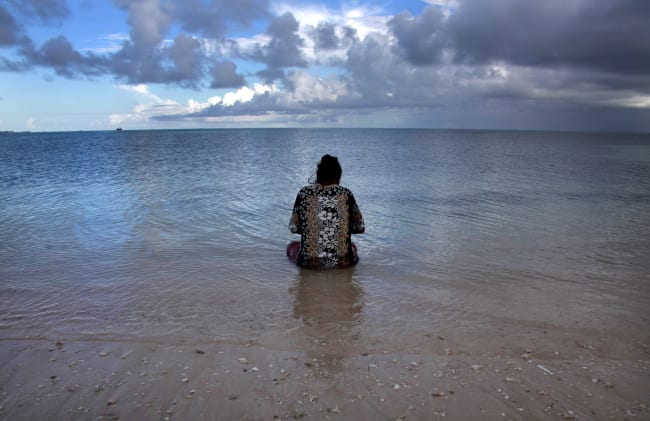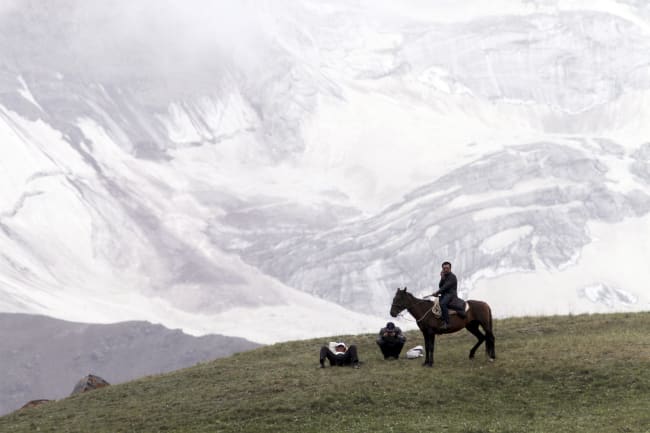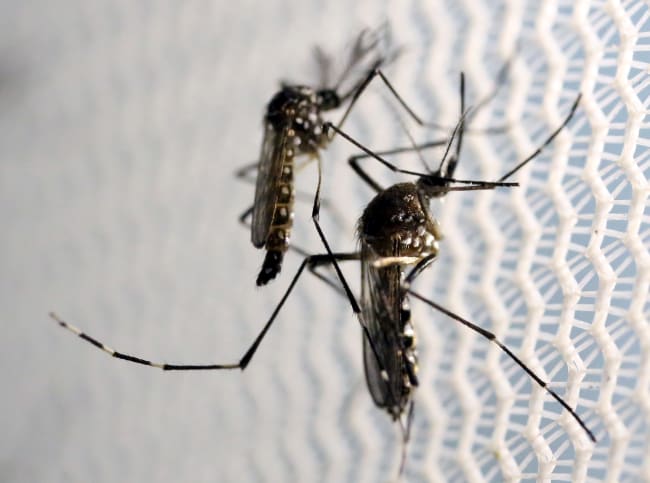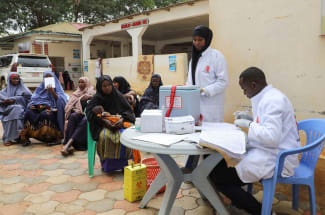In 2020, Phoenix experienced a record 144 days with temperatures above 100°F, and climate change threatens to raise temperatures still further. But it's also the fastest-growing big city in the United States, with a population that climbed 11.2 percent between 2010 and 2020, to 1.6 million.
Mayor Kate Gallego, who was first elected in 2019, one of the youngest people to lead a major U.S. city, has declared her intention to make the Phoenix "the most sustainable desert city on the planet." She spoke with Think Global Health about governing the country's fifth most populous city, and addressing global challenges at the local level.
□ □ □ □ □ □ □ □ □ □ □ □ □
Think Global Health: How long have you been thinking about climate change through the lens of health?
Kate Gallego: I was very interested in environmental issues growing up. I was diagnosed with asthma, and thought a lot about air quality for that reason. I also have fond memories of spending time outside hiking and enjoying the western environment, and I was involved in founding the environmental club at my high school, and then went on to get an environmental degree from Harvard. After that, I moved out to Phoenix and got involved with energy issues. I think my interest in sustainability really connected me to local government and I saw what a difference you can make.
Phoenix is a city that's still determining its future. We are the fifth-largest city in the country and obviously very established but in many ways we're still a young city. The industry mixes are changing dramatically, towards health and high-tech. We have land that has not yet [been] developed and we're in the midst of major redevelopment in areas such as our riverfront. So, there's really a chance to change the urban form of Phoenix and to put quality of life and sustainability at the forefront.
There's really a chance to change the urban form of Phoenix and to put quality of life and sustainability at the forefront
Think Global Health: What does "sustainability" mean in a desert city like Phoenix?
Kate Gallego: My dad used to always tease me [that] if I could only do something about summers in Phoenix, I would definitely be reelected.
We are the first city in the country to have a permanent Office of Heat Response & Mitigation, which means that managing heat is a citywide responsibility. We've tried to be innovative in how we look at our built environment. We have a Cool Pavement Program, where we apply a lighter-colored coating to our streets. Arizona State University found that we have about 10 degrees cooler surface temperatures on those streets, so it's a difference that you can really feel.

Think Global Health: Cities often end up concentrating the inequalities of our wider society. What measures have you been thinking about to push back against the risk that trees and shade are less accessible to less well-off neighborhoods?
Kate Gallego: We have tried to put equity at the forefront of our Tree Program. The great nonprofit American Forests has a tool to measure where trees are being planted and where they are needed, and we're working with them to make sure our low-income communities and communities of color get to benefit from our investments in trees.
One proposed program that I'm very excited about is a Residential Tree Equity Accelerator: we would pick twenty-five neighborhoods that have traditionally not seen as much investment, [plant] up to four trees per home, and pay local residents a stipend to be responsible for maintaining and watering them. There'll be economic benefits for the people; we can plant the trees [along] south- and west-facing walls in a way that will reduce summer energy bills; and we can create more attractive outdoor spaces where families will want to spend more time. So we're hoping that lower energy bills, community, and healthier environments can come out of these investments.
Think Global Health: That's really cool (no pun intended). In terms of reducing Phoenix's contribution to global greenhouse gas emissions, what opportunities exist to electrify municipal vehicles?
Kate Gallego: We have invested in electric motorcycles for the police department, and electrified ground equipment at the airport. Most recently, we had a unanimous vote to move towards a more sustainable electric fleet of our buses.
The federal government's bipartisan infrastructure law provides significant resources to help us have a greener fleet. Again, we're trying to put equity at the forefront: I'm hopeful that we will have electric charging at public housing, and we're going to experiment with electric car-share for our lower income residents. We can't guarantee everything we try will work, but we hope these environmental benefits will extend to the communities that are most impacted.
We're seeing the market drive towards more urban form, more people wanting to live along transit and in our downtown
Think Global Health: In a fast-growing city like Phoenix, future development has long-term implications for energy use. Does the city require renewable energy purchases or on-site renewables for new buildings?
Kate Gallego: Arizona has a strict local preemption law, authored by then-state legislator Andy Biggs (who is now a prominent member of the Freedom Caucus) in response to innovative environmental policies of cities. We have made significant progress greening our building stock, but it's been through voluntary measures and trying to ensure our building codes are open to more efficient technology. The market is driving that.
We have seen significant expansion in our residents' interest in solar energy. We cannot hire inspectors at the rate necessary to keep up with demand for those installations. We're also seeing our businesses responding to their workforce demanding that sustainability be at the forefront.
Many cities have seen flight from urban cores. But during the peak of COVID, we had twenty cranes in our downtown, primarily constructing condos and apartments. So we're seeing the market drive towards more urban form, more people wanting to live along transit and in our downtown.
Think Global Health: Phoenix is also one of the most sprawling cities in the country, which would seem to lock in habits of transportation. What is in your power to incentivize public transit and make smarter land-use decisions?
Kate Gallego: After I got elected to city council, my first newsworthy activity was having a seizure: I had way too much coffee and ended up having a seizure at city hall before I'd even been sworn in. Not how I hoped to start my public life.
That's important to my thinking on transit because when you have a seizure in Arizona, you lose your driver's license for several months while doctors evaluate whether it's likely to happen again while you're behind the wheel. In uptown, we have a great transit system and it is easy to get around. But there were parts of this city that were very hard to navigate without a car. That led me to get involved with chairing our citywide transportation campaign, Transportation 2050.
In 2015, our voters approved what was at the time the largest municipal investment in transportation in the country. It included tripling our light rail system, bringing bus service to the entire city, and creating safer, more walkable streets. That's dramatically changing the face of our city.
We are seeing billions of dollars of investment along the light-rail corridor because people want to live and work in that area. I think that will be one of the most important changes in our city's history, in terms of changing patterns of development and how the city operates.
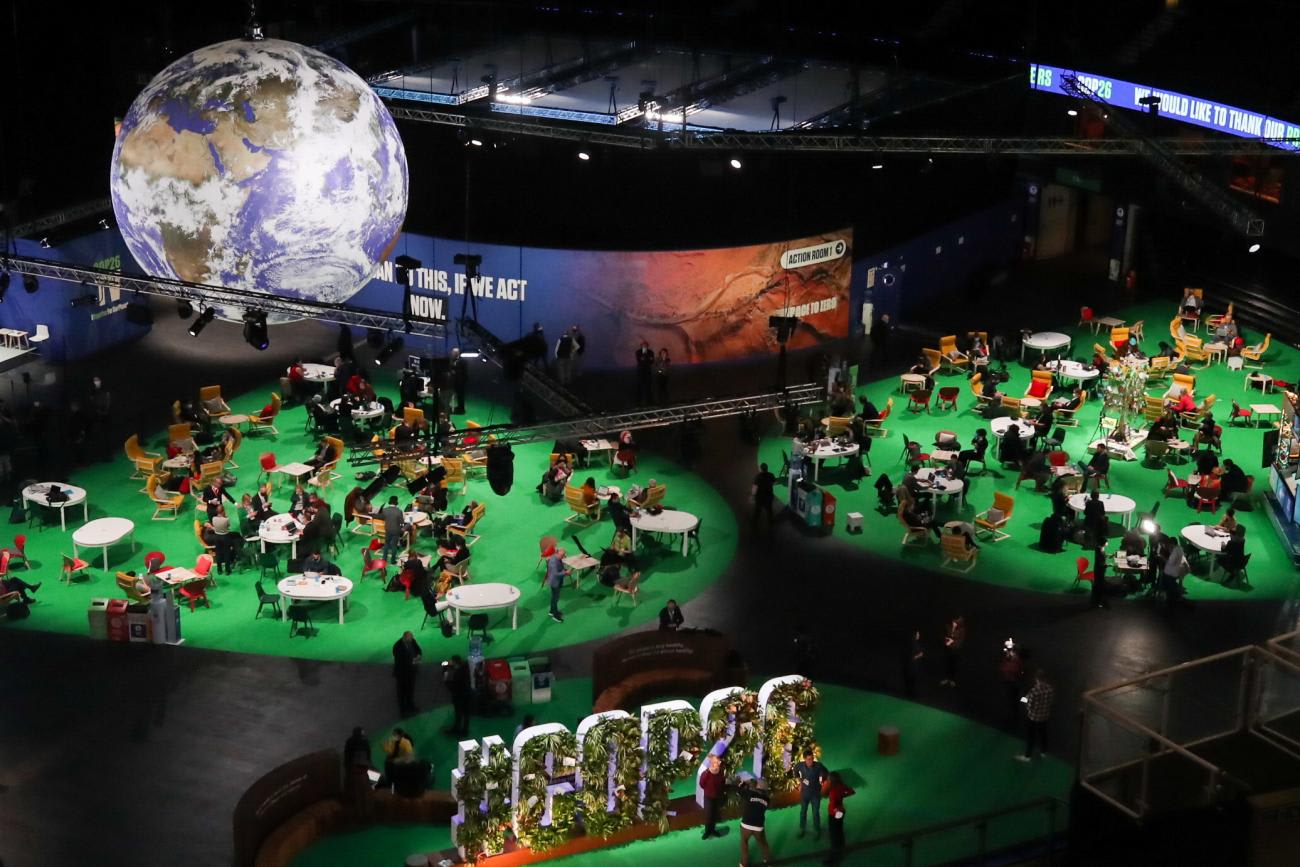
Think Global Health: You were at the 2021 United Nations Climate Change Conference (COP26) last fall. What were your impressions?
Kate Gallego: I was there through C40, a group of 97 cities across the globe that are working on climate change, half from the global south. I was really proud of the role that cities played: More than 1,000 cities committed to 50 percent greenhouse gas emissions by 2030 and net zero by 2050. Mayors are finding solutions to how we change the built environment, how we improve transportation, and the more we can do together the better.
We've worked well together on climate change, but the relationships extend beyond that. One of the most impactful meetings I've had as mayor was early on in [the] COVID [pandemic] when we convened to talk about how we were responding. Hearing from South Korean mayors about what they were doing on contact tracing really inspired my work here.
There have not been too many silver linings of COVID, but from my perspective, one is that mayors around the globe have been able to work more closely together. We've gotten so used to online meetings that it is much easier to collaborate.
Think Global Health: How do you manage longer-term and more inconspicuous challenges of health? What kind of strategies does a mayor have to employ to make progress towards those goals?
Kate Gallego: Phoenix tries to be very data-driven, so we have public health metrics on our dashboard for decision making in a way that we did not before.
In our form of government in Arizona, the city is not the public health authority, but it became front and center for so many of our residents that we had to step up. Phoenix is very involved in sharing public health information, doing testing, doing COVID-19 vaccinations. We've invested in mobile units that do testing and vaccination. Those will continue past [the pandemic], whether focused on flu shots or vaccination for our youngest children, or to respond to the next public health challenge. But that infrastructure and that knowledge will be with us for at least a generation.
We hope that's the environment we have here in Phoenix — where we take what we have to work with and create something really impressive
Think Global Health: You're known as a mayor with a deep grasp of the mechanics of policy, but we're in an age where science is dismissed by large sets of voters or even seen as an antagonist. Many of the challenges posed by climate change are ones we've come to understand scientifically, because they aren't visible to the eye. What challenges do you face in governing based on your scientific approach to issues?
Kate Gallego: When I communicate about science, I try to be intentional about explaining where I got the information. I hope that transparency builds confidence: How am I making decisions and what data have I reviewed?
I am concerned about how the general public is viewing science with skepticism, and that many people feel that they can have their own set of facts. That's something we need to have a dialogue about as a community.
People want to get scientific information from those who are most familiar to them, so I've tried to push people to talk to their own doctor. Unfortunately, in my community, there are a lot of people who don't have a relationship with a doctor.
Think Global Health: Have the politics of climate change and sustainability evolved, or are they as polarizing as ever?
Kate Gallego: When the city passed our Climate Action Plan, it was not unanimous and there did seem to be divisions along party lines. When we invested in electric vehicles and our tree programs, those votes were unanimous. Some people say that leadership is trying to figure out what's the best possible outcome and pushing towards that. In my community, I see wide support around investments in solar energy, in open spaces, and in electric vehicles. I think there's more that can be politically done in some of those areas and we're trying to put resources where we feel like we can get the most improvements in the lives of our residents, and the biggest contribution to reducing greenhouse gas emissions.
Think Global Health: Looking ahead, are there ambitions that are still taking shape for you with regards to sustainability of Phoenix?
Kate Gallego: It's important to me to create an environment where innovation is at the forefront. We have to be willing to try new things without knowing what the outcome will be. As we grow incredibly quickly, it's difficult to take on emissions reductions; we know how we're going to get through the next five years, but we are depending on innovation to get us to net zero [emissions].
I'm hoping that the people we hire are creative and data-driven. We want data to lead our decisions — but we also want to welcome professionals who are willing to take a risk. Phoenix got its name because of the mythical bird that rose from the ashes. It's a story of creating beauty out of not a lot at the beginning. And we hope that's the environment we have here in Phoenix — where we take what we have to work with and create something really impressive.

EDITOR'S NOTE: This interview was conducted via Zoom and has been edited for length and clarity.

